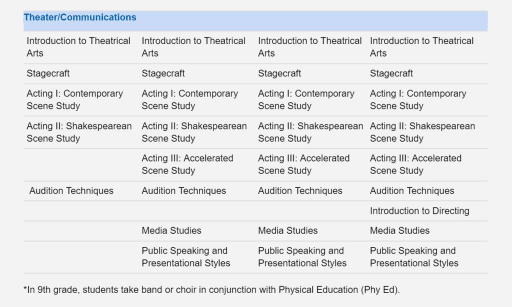Speech Therapy For Parkinson’s Disease
If you or a loved one is living with Parkinson’s disease, you may be wondering how speech therapy can help improve communication skills. Speech therapy for Parkinson’s disease focuses on addressing the specific challenges that can arise with speech and swallowing. In this article, we’ll explore how speech therapy can make a positive impact on your ability to communicate effectively.
One of the main symptoms of Parkinson’s disease is a change in speech patterns, which can make communication difficult. Speech therapy aims to improve clarity, volume, and articulation, helping individuals with Parkinson’s regain confidence in their ability to express themselves.
In addition to working on speech, speech therapy for Parkinson’s disease also addresses swallowing difficulties that may accompany the condition. By providing exercises and techniques, speech therapists can help individuals strengthen their swallowing muscles and reduce the risk of aspiration. So let’s dive deeper into the benefits of speech therapy for Parkinson’s disease and discover how it can enhance your quality of life.

Speech Therapy for Parkinson’s Disease: Empowering Communication Skills
Speech therapy plays a crucial role in improving communication skills for individuals with Parkinson’s disease. With the progression of the condition, speech and swallowing difficulties can arise, impacting daily interactions and overall quality of life. In this article, we will explore the various aspects of speech therapy for Parkinson’s disease, including its benefits, techniques, and tips for both patients and caregivers. By understanding this specialized form of therapy, individuals with Parkinson’s disease can regain confidence in their ability to express themselves.
1) The Importance of Speech Therapy in Parkinson’s Disease
Parkinson’s disease affects the communication skills of an individual by causing changes in the voice, articulation, and fluency. Speech therapy aims to address these challenges, helping patients regain control and clarity in their speech. Therapists work closely with individuals with Parkinson’s disease to assess their unique needs and develop personalized treatment plans.
During speech therapy sessions, patients will engage in exercises focused on breath support, vocal strength, and articulation. These exercises help improve voice projection, clarity of speech, and overall intelligibility. Speech therapy also addresses the non-verbal aspects of communication, such as facial expressions and body language, to enhance overall effectiveness and social interactions.
Beyond the immediate benefits of improved communication, speech therapy for Parkinson’s disease can have a lasting impact on a patient’s emotional well-being. By regaining confidence in their ability to communicate effectively, individuals with Parkinson’s disease can reduce feelings of frustration, isolation, and anxiety.
2) Techniques Used in Speech Therapy for Parkinson’s Disease
Speech therapy for Parkinson’s disease incorporates a range of techniques to address the unique speech and swallowing challenges associated with the condition. These techniques are tailored to the individual’s specific needs and may include:
- Loudness training: This technique focuses on increasing vocal volume to counter the soft, monotone voice often present in Parkinson’s disease. Patients are guided to consciously speak louder, engaging their diaphragm and breath support.
- Articulation exercises: Difficulties in articulation can lead to slurred speech and reduced clarity. Speech therapists use specific exercises to target the muscles involved in articulation, facilitating clearer speech production.
- Intonation therapy: Parkinson’s disease can result in a lack of natural variation in speech melody. Therapists use exercises that emphasize melodic contour, helping patients regain natural intonation patterns.
Additionally, speech therapists may introduce the use of assistive devices, such as speech amplifiers or text-to-speech apps, to support communication in everyday life. These devices can provide immediate feedback and help individuals with Parkinson’s disease overcome challenges related to vocal volume, clear articulation, and overall intelligibility.
3) Tips for Patients and Caregivers
For individuals with Parkinson’s disease and their caregivers, the following tips can enhance the effectiveness of speech therapy:
- Consistency: Attend all scheduled therapy sessions and practice recommended exercises consistently to maximize progress.
- Environmental considerations: Optimize the communication environment by reducing background noise and facing the individual with Parkinson’s disease during conversations.
- Patience and support: Encourage and support the individual during their speech therapy journey, as progress may vary over time.
Furthermore, engaging in activities that promote vocal and speech health, such as singing, reading aloud, and engaging in conversations, can complement formal speech therapy sessions.
Current Research on Speech Therapy for Parkinson’s Disease
Ongoing research continues to explore new techniques and technologies in the field of speech therapy for Parkinson’s disease. Promising areas of study include the use of virtual reality for practicing real-life communicative scenarios and the integration of speech therapy with other forms of therapy, such as physical and occupational therapy, to provide a holistic approach to Parkinson’s disease management. Stay updated on the latest developments in speech therapy for Parkinson’s disease as they may contribute to further enhancing communication outcomes.
Supportive Resources for Individuals with Parkinson’s Disease
Besides professional speech therapy, individuals with Parkinson’s disease can benefit from additional resources and support. Parkinson’s disease support groups provide a supportive community where individuals can share experiences, tips, and emotional support. Online platforms and mobile applications also offer speech exercises, voice training modules, and communication tips specifically tailored for Parkinson’s disease. Exploring these resources can complement the therapy process and provide ongoing support.
Conclusion
Speech therapy plays a vital role in enabling individuals with Parkinson’s disease to communicate more effectively. Through targeted techniques and personalized treatment plans, speech therapists empower patients to regain control of their voice and enhance their overall communication skills. With ongoing research and the availability of supportive resources, the outlook for speech therapy in Parkinson’s disease continues to improve. By embracing speech therapy as a part of the Parkinson’s disease management plan, individuals can enhance their quality of life and experience greater confidence in their ability to express themselves.
Key Takeaways: Speech Therapy for Parkinson’s Disease
- Speech therapy aims to improve communication skills in individuals with Parkinson’s disease.
- Therapists use exercises to help strengthen speech muscles and improve clarity of speech.
- Breath control exercises are important in speech therapy for Parkinson’s disease.
- Speech therapy can also help with swallowing difficulties often experienced by individuals with Parkinson’s disease.
- Regular practice and consistency are crucial for the effectiveness of speech therapy.
Frequently Asked Questions
Welcome to our FAQ section, where we will answer some common questions about speech therapy for Parkinson’s disease. We understand the importance of finding effective treatments for individuals with Parkinson’s disease who are experiencing speech difficulties. Here, we’ll provide you with information that will help you better understand how speech therapy can help.
Question 1: How can speech therapy benefit individuals with Parkinson’s disease?
Speech therapy can significantly benefit individuals with Parkinson’s disease by addressing the communication challenges they may face. Therapists can help improve speech clarity, voice volume, and articulation. They also assist with addressing swallowing difficulties that can occur due to weakened muscles.
Through various exercises and techniques, speech therapy can enhance overall communication skills, enabling individuals to express themselves more effectively and confidently. In addition to working on speech and voice, therapists may also focus on non-verbal communication cues and strategies for navigating conversations.
Question 2: What are some common speech difficulties experienced by individuals with Parkinson’s disease?
Individuals with Parkinson’s disease may experience various speech difficulties, including soft or mumbled speech, monotone voice, slurred speech, and a hoarse or breathy voice. Others may find it challenging to initiate speech or speak too quickly due to decreased control over their muscles.
In some cases, individuals with Parkinson’s disease may also develop dysarthria, a condition that affects speech muscles, resulting in unclear or difficult-to-understand speech. These difficulties can impact their ability to communicate effectively, leading to frustration and social isolation.
Question 3: What does a typical speech therapy session for Parkinson’s disease entail?
A typical speech therapy session for Parkinson’s disease will involve a comprehensive assessment of an individual’s speech and communication abilities. The therapist will then tailor a treatment plan based on the specific needs and goals of the individual.
Treatment sessions may include various exercises to improve voice volume and clarity, such as vocal warm-ups, breath control exercises, and practicing articulation. The therapist may also incorporate cognitive-linguistic exercises to address word finding difficulties and improve overall communication skills. Additionally, they may provide strategies and techniques for managing speech difficulties in daily life.
Question 4: How long does speech therapy for Parkinson’s disease usually last?
The duration of speech therapy for Parkinson’s disease can vary depending on individual needs, severity, and progress. Typically, therapy sessions are conducted on a regular basis over several weeks or months.
It’s important to note that speech therapy is an ongoing process, as Parkinson’s disease is a progressive condition. Continual therapy and support from professionals can help individuals maintain and further improve their speech and communication abilities over time.
Question 5: Is speech therapy the only treatment option for speech difficulties related to Parkinson’s disease?
No, speech therapy is not the only treatment option for speech difficulties related to Parkinson’s disease. It is often recommended as a primary intervention due to its effectiveness. However, other treatment approaches, such as medication, deep brain stimulation, and surgical options, may also be used in combination with speech therapy.
Collaboration between healthcare professionals, including neurologists, speech-language pathologists, and other therapists, is crucial to develop a comprehensive treatment plan that addresses the various aspects of Parkinson’s disease, including speech difficulties.
Summary
Speech therapy can help people with Parkinson’s disease improve their communication skills. Through exercises and techniques, speech therapists can help them regain control of their voice, improve articulation, and enhance their overall communication abilities. Additionally, speech therapy can also help with swallowing difficulties, which are often associated with Parkinson’s disease. It is important for individuals with Parkinson’s to seek speech therapy early to maximize the benefits and improve their quality of life.
Speech therapy for Parkinson’s disease is personalized to each individual’s needs and may include exercises to strengthen the muscles used for speech and swallowing, as well as strategies to compensate for any speech or swallowing difficulties. It is crucial for individuals with Parkinson’s to maintain consistency in attending therapy sessions and practicing exercises at home. With the help of speech therapists, people with Parkinson’s disease can regain their confidence and improve their ability to communicate effectively with others.




